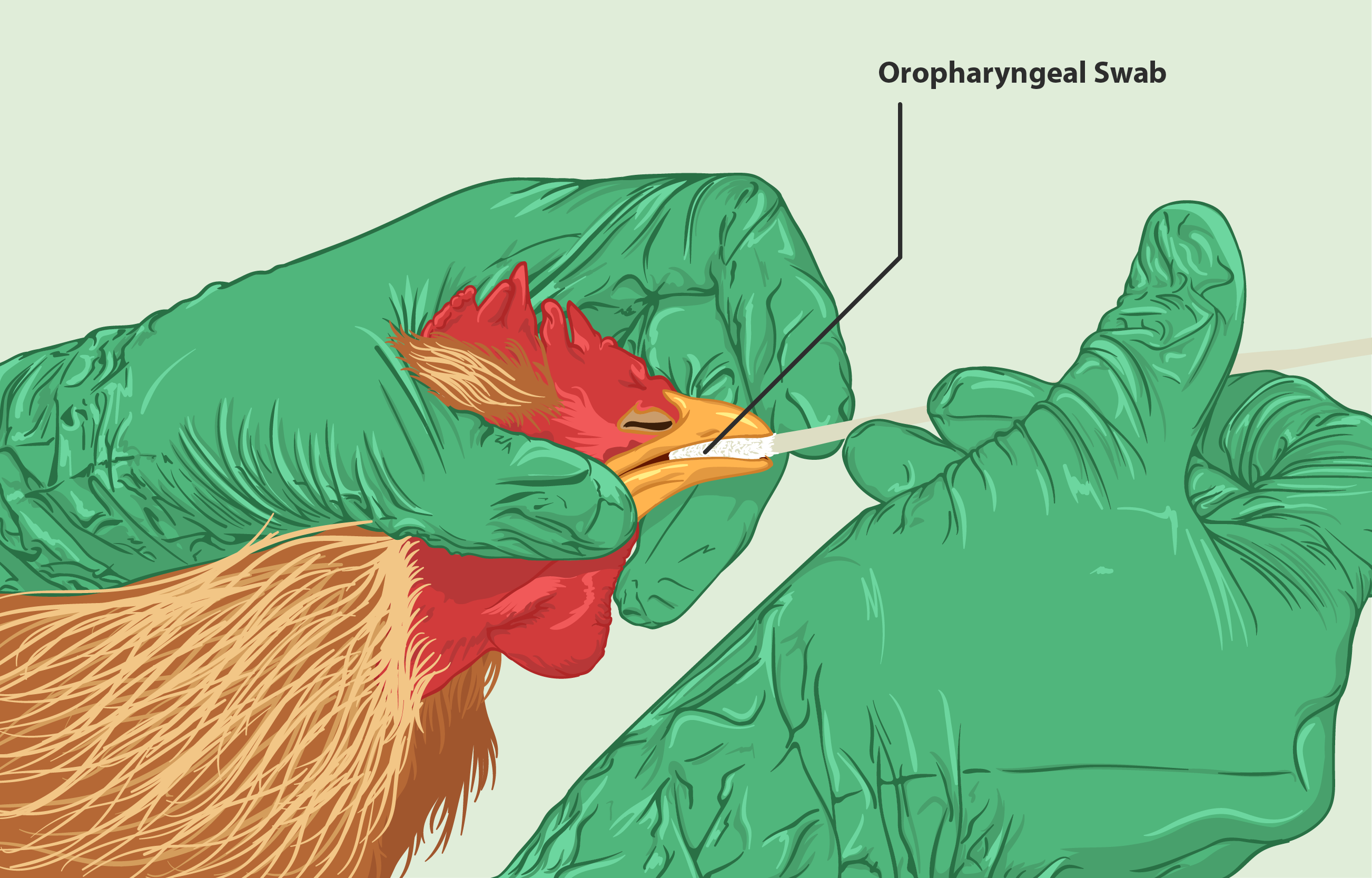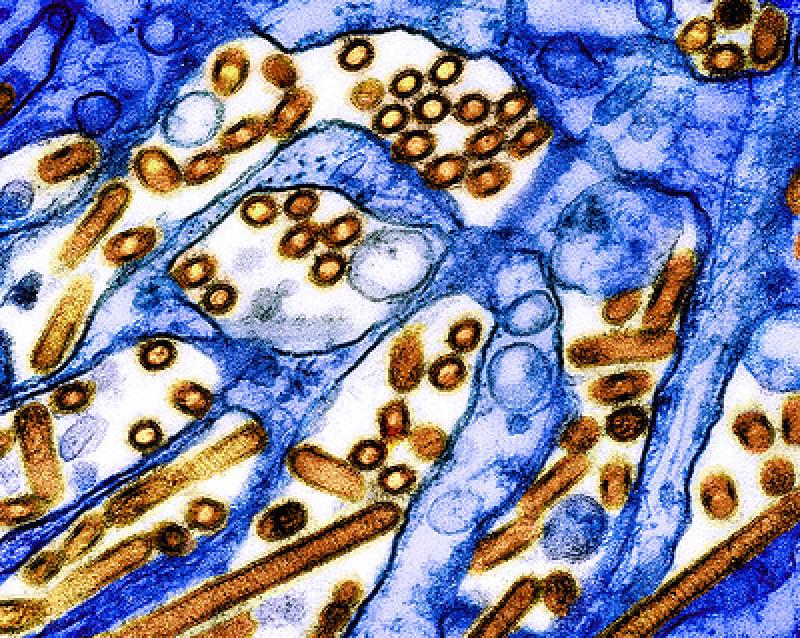Bird Flu Update: California Declares State of Emergency Amid Growing Concerns
California has declared a state of emergency in response to the rapid spread of bird flu (H5N1), marking a critical moment in managing this evolving outbreak. The virus, which primarily spreads among birds, has now crossed into cattle, raising serious concerns about its adaptability and potential risks to humans. This development comes on the heels of the first severe human case of H5N1 reported in Louisiana and new research indicating the virus may be mutating in ways that could increase its ability to infect humans. Read more on CNN.
Louisiana’s Severe Case: A Warning Signal
On December 18, 2024, the CDC confirmed the first severe human case of H5N1 in the United States. A Louisiana man was hospitalized after handling infected backyard poultry. He developed severe respiratory symptoms that required intensive care. This case highlights the dangers of direct exposure to infected birds or contaminated environments and underscores the importance of vigilance in managing this outbreak.
Symptoms of bird flu in humans include high fever, difficulty breathing, fatigue, muscle aches, and conjunctivitis (pink eye). Severe cases can lead to pneumonia, acute respiratory distress, and even death. Learn more about symptoms and care from the World Health Organization. Anyone experiencing these symptoms after exposure to birds or livestock should seek immediate medical attention.
California’s State of Emergency: Why It Matters
California’s declaration reflects the escalating situation, with the virus now spreading beyond poultry to cattle. H5N1 has been detected in dairy herds, including cow udders, raising alarms about its ability to jump between species. According to the California Department of Food and Agriculture, pasteurized milk remains safe for consumption, as the pasteurization process eliminates harmful pathogens. However, these findings highlight the virus’s adaptability and its potential to pose greater risks to human and animal health.
How Bird Flu Spreads Across Species
Bird flu primarily spreads among birds through droppings, respiratory secretions, and contaminated feed or water. The recent crossover into cattle suggests the virus is evolving, increasing the need for stringent surveillance. In humans, bird flu infections are rare and typically occur after direct contact with infected animals or their environments. The US Department of Agriculture has provided additional resources to help farms and individuals minimize risk. At this time, there is no evidence of ongoing human-to-human transmission, but the potential for mutation remains a concern.
The Threat of Mutation
A study published in Science (DOI: 10.1126/science.adt0180) reveals genetic changes in H5N1 that could allow it to infect human cells more effectively. While sustained human-to-human transmission has not occurred, the possibility of such mutations emphasizes the need for proactive public health measures. For more on genetic mutations and their implications, visit Nature.
Culling Birds: A Double-Edged Sword
To control the spread of H5N1, infected bird populations are often culled. While necessary, this strategy carries risks. Handling and transporting infected birds can aerosolize the virus, increasing the chances of spread to nearby areas or other species. Farm workers involved in culling operations are advised to follow strict protective measures, including wearing masks, gloves, and protective clothing, as outlined by OSHA.
 |
| A chicken being swabbed for bird flu testing as part of biosecurity measures to monitor and control avian influenza outbreaks. Image credit: Wikimedia Commons. |
How Bird Flu Differs from Seasonal Flu
Bird flu and seasonal flu differ significantly. Seasonal flu spreads easily between people, primarily through respiratory droplets, and is typically mild in healthy individuals. In contrast, bird flu rarely spreads to humans and is primarily confined to birds, though it has now been observed in cattle. Human cases of bird flu are usually linked to direct contact with infected animals, and the virus does not currently spread efficiently between humans. For seasonal flu updates, visit the CDC’s Flu Page.
Importantly, the annual flu shot, designed to protect against seasonal flu strains, does not offer protection against bird flu, leaving humans vulnerable to H5N1 if exposed to infected animals or environments.
Protecting Yourself and Your Family
The CDC and other public health experts recommend taking several steps to reduce your risk of exposure:
- Avoid contact with sick or dead birds or livestock.
- Practice good hygiene, including frequent handwashing, especially after handling raw poultry or eggs.
- Cook poultry and eggs thoroughly, ensuring they reach an internal temperature of at least 165°F.
- Drink only pasteurized milk, which is safe because the pasteurization process kills viruses, including H5N1.
- Report sick or dead birds and unusual illnesses in livestock to local authorities immediately.
The Bigger Picture
California’s state of emergency, the severe human case in Louisiana, and the spread of bird flu to cattle underscore the interconnectedness of human and animal health. Research findings emphasize the importance of monitoring the virus’s behavior and preparing for potential mutations that could increase its transmissibility to humans.
While the immediate risk to the public remains low, staying informed and following public health recommendations is essential. Vigilance, international cooperation, and proactive measures will be key to addressing this evolving threat and safeguarding both human and animal populations.
Topics Covered: Bird flu · H5N1 · California state of emergency · Louisiana human case · Public health · Mutation risks · CDC recommendations
Follow us:
References
California Department of Food and Agriculture. (n.d.). Avian Influenza Information. Retrieved from https://www.cdfa.ca.gov/ahfss/Animal_Health/Avian_Influenza.html.
Centers for Disease Control and Prevention (CDC). (2024, December 18). CDC Confirms First Severe Human Case of H5N1 in the U.S. Retrieved from https://www.cdc.gov/media/releases/2024/m1218-h5n1-flu.html.
CNN. (2024, December 18). Severe bird flu reported in Louisiana: First U.S. case raises concerns. Retrieved from https://www.cnn.com/2024/12/18/health/severe-bird-flu-louisiana-first-us-case.
National Institute of Allergy and Infectious Diseases (NIAID). (n.d.). Colorized Transmission Electron Micrograph of Avian Influenza A H5N1 Virus Particles. Retrieved from https://www.niaid.nih.gov/sites/default/files/styles/image_style_33_width_xs_2x/public/h5n1.jpg?itok=nr5VpR7C.
Nature. (n.d.). Genetic mutations in avian influenza viruses. Retrieved from https://www.nature.com/articles/s41564-023-01320-7.
Occupational Safety and Health Administration (OSHA). (n.d.). Guidance on Avian Influenza Protection for Workers. Retrieved from https://www.osha.gov/avian-flu/protect.
Science. (2024). Avian Influenza A (H5N1) Mutation Risks. DOI: 10.1126/science.adt0180.
U.S. Department of Agriculture (USDA). (n.d.). Defend the Flock Program: Avian Influenza Resources. Retrieved from https://www.aphis.usda.gov/aphis/ourfocus/animalhealth/animal-disease-information/avian/avian-influenza/defend-the-flock-program.
World Health Organization (WHO). (n.d.). Avian Influenza Overview. Retrieved from https://www.who.int/health-topics/avian-influenza#tab=tab_1.
Wikimedia Commons. (2019, August 16). A chicken being tested for Bird Flu. Retrieved from https://commons.wikimedia.org/wiki/File:A_chicken_being_tested_for_Bird_Flu.png.



Comments
Post a Comment